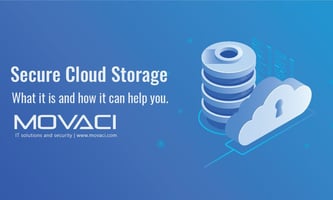Have you ever wanted to access a file or information that you had stored on another computer or...
The Future of Cloud Security: Lessons and Predictions for 2025
As businesses continue to embrace cloud computing for its scalability, flexibility, and cost efficiency, securing cloud environments has become a top priority. While cloud technology offers numerous advantages, it also introduces unique security challenges that organizations must address.
In 2024, the Snowflake data breach sent shockwaves through the cybersecurity community, as threat actors exploited compromised credentials to access sensitive customer data stored in the cloud. This breach underscored the vulnerabilities organizations face, particularly around identity and access management, and highlighted the need for more robust cloud security measures. The incident serves as a reminder that even leading cloud data platforms are not immune to cyber threats, emphasizing the importance of proactive security strategies.
This article explores the key security challenges in the cloud, effective solutions, and future trends that will shape cloud security strategies.
Cloud Security Challenges
Cloud security threats arise due to the shared responsibility model, third-party dependencies, and the growing sophistication of cyber threats. Some of the most pressing challenges include:
- Data Breaches and Unauthorized Access
Cloud environments store vast amounts of sensitive data, making them attractive targets for cybercriminals. Weak authentication mechanisms, misconfigured access controls, and inadequate encryption increase the risk of unauthorized access and data breaches.
- Misconfigurations and Human Errors
Misconfigurations, such as open storage buckets, publicly accessible databases, and excessive permissions, are among the leading causes of security incidents. A lack of expertise in cloud security can result in accidental data exposure and vulnerabilities.
- Insecure APIs and Interfaces
Cloud services rely heavily on APIs for integration and communication. Poorly secured APIs can be exploited by attackers to gain unauthorized access to sensitive data and disrupt cloud services.
- Insider Threats
Employees or contractors with excessive access privileges pose a security risk, whether through malicious intent or accidental misuse. Insider threats are particularly challenging to detect and mitigate.
- Compliance and Regulatory Challenges
Organizations operating in regulated industries must adhere to standards such as GDPR, HIPAA, and PCI DSS. Ensuring compliance across multiple cloud providers can be complex and resource intensive.
- Cloud Provider Dependency and Third-Party Risks
Businesses rely on cloud service providers (CSPs) for infrastructure security, but vulnerabilities within the provider’s platform can still impact customers. Additionally, integrating third-party services introduces new attack surfaces.
Solutions for Strengthening Cloud Security
To address these challenges, organizations must implement a robust cloud security strategy incorporating the following best practices:
- Identity and Access Management (IAM)
- Enforce multi-factor authentication (MFA) to enhance user verification.
- Implement least privilege access to restrict permissions based on necessity.
- Utilize Role-Based Access Control (RBAC) and Attribute-Based Access Control (ABAC) to ensure secure access management.
- Secure APIs and Data Encryption
- Implement API gateways with authentication, rate limiting, and monitoring.
- Encrypt data in transit and at rest using industry-standard encryption protocols.
- Use tokenization and data masking for additional data protection.
- Zero Trust Security Model
- Adopt a Zero Trust Architecture where trust is never assumed, even for internal users.
- Continuously verify users, devices, and workloads before granting access.
- Security Information and Event Management (SIEM) and Extended Detection and Response (XDR)
- Utilize SIEM solutions for real-time monitoring and analysis of security threats.
- Implement XDR solutions to integrate security data from multiple sources for proactive threat detection.
- Compliance Automation
- Use compliance management tools to automate security audits and regulatory compliance checks.
- Implement policy-as-code to enforce security policies consistently.
- Backup and Disaster Recovery
- Regularly back up critical data and test disaster recovery plans.
- Utilize geo-redundant storage to minimize downtime in case of an attack.
Future Predictions for Cloud Security
As cloud adoption grows, security strategies must evolve to counter emerging threats. The following trends are expected to shape the future of cloud security:
- AI-Driven Threat Detection
Artificial intelligence and machine learning will enhance threat detection by analyzing behavioral patterns and predicting attacks. Automated security response mechanisms will reduce the need for manual intervention and improve threat mitigation.
- Widespread Adoption of Zero Trust Security
Organizations will increasingly transition to Zero Trust Network Access (ZTNA) to replace traditional VPNs and perimeter-based security models. Identity-based security will become the standard for cloud access management.
- Stricter Regulations and Compliance Requirements
Governments and industry regulators will introduce stricter data protection laws and cloud security mandates, compelling organizations to invest more in compliance management.
- DevSecOps and Automated Security
Security will be integrated into the software development lifecycle through DevSecOps, enabling organizations to detect and address vulnerabilities earlier in the process. Security-as-code will ensure automated enforcement of security policies.
- Growth of Confidential Computing
Confidential computing will gain momentum, ensuring that data remains encrypted even while being processed. Hardware-based security mechanisms will provide enhanced data privacy in multi-cloud environments.
Conclusion
As cloud security threats continue to evolve, organizations must adopt a proactive, multi-layered approach to safeguard their cloud environments. Staying ahead of emerging threats requires continuous investment in cutting-edge security solutions and a strong commitment to cybersecurity best practices.
If you are looking for expert guidance on compliance or need support with the design and implementation of secure cloud services and workloads, Movaci is here to help. With extensive experience in cloud consulting and compliance, our team can provide tailored solutions to meet your business needs. Reach out to us at sales@movaci.com to schedule your free initial consultation today.




